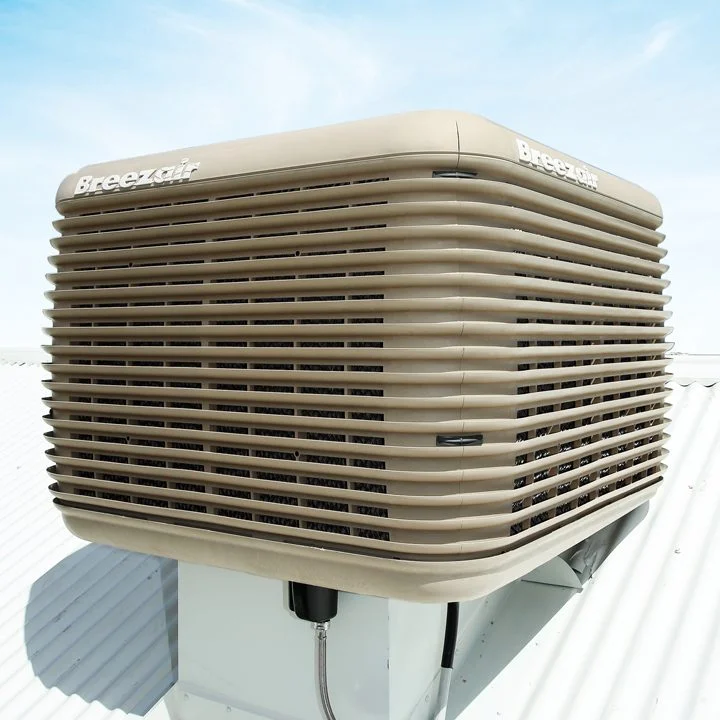With energy costs rising and environmental consciousness growing, more Australians are looking for efficient, eco-friendly ways to heat and cool their homes. Two standout options—evaporative cooling and wood pellet heating—offer natural solutions for year-round comfort without conventional systems’ excessive carbon footprint or hefty energy bills.
Understanding how these technologies work and their effectiveness in the Australian climate can help you make informed choices that balance sustainability, efficiency, and comfort.
The Benefits of Evaporative Cooling
Unlike traditional air conditioning systems that rely on refrigerants and compressors, evaporative cooling uses water evaporation to reduce indoor temperatures. Hot outdoor air is drawn through water-soaked pads, which cools the air as it evaporates, and then that fresh, cool air is circulated throughout the home.
Here are some of the benefits of evaporative cooling:
1. Energy Efficiency
Evaporative coolers use up to 75% less energy than traditional refrigerated air conditioning systems. This makes them an economical choice for cooling large spaces, especially in dry, hot regions.
2. Environmentally Friendly
Evaporative systems are better for the environment because they don’t rely on refrigerants or consume large amounts of electricity. They produce fewer greenhouse gas emissions and use water—a renewable resource—as the main cooling agent.
3. Improved Air Quality
Evaporative cooling constantly circulates fresh air from outside rather than recirculating stale indoor air. The cooling pads also filter out dust and allergens, making the indoor environment cleaner and healthier.
4. Low Maintenance
Most evaporative coolers require less maintenance than refrigerated units. Regular pad cleaning and a seasonal check-up are usually enough to keep them running efficiently.
5. Cost Savings
The lower energy usage directly translates into reduced electricity bills. The savings can be significant if you run your system frequently during summer.
Heating with Wood Pellets
Regarding winter warmth, heating with wood pellets offers a sustainable and effective solution. Wood pellet heaters burn compressed wood or biomass pellets to produce heat. These pellets are typically made from recycled sawdust, wood shavings, and other by-products of the timber industry.
1. Renewable and Sustainable
Pellet heaters use fuel made from renewable sources. Since the pellets are often created from waste materials, this form of heating helps reduce landfills and uses resources that would otherwise be discarded.
2. Efficient Heating Performance
Modern pellet heaters are designed for high efficiency, with many models achieving over 85% efficiency ratings. This means more of the pellets’ energy is converted into usable heat, resulting in consistent and cost-effective performance.
3. Low Emissions
Wood pellet heaters produce far fewer emissions than open fireplaces or older wood stoves. They are a cleaner alternative, particularly for areas with air quality regulations.
4. Easy to Use
Pellet heaters have features like automatic ignition, programmable thermostats, and user-friendly controls. To use them, you simply load the hopper with pellets, set your desired temperature, and let the system do the rest.
5. Stylish and Versatile
These systems come in a variety of designs to match modern interiors. They can be installed as freestanding units or integrated into existing heating infrastructure.
A Year-Round Natural Climate Control Strategy
Combining evaporative cooling for summer and pellet heating for winter offers a holistic approach to indoor climate control that is efficient, cost-effective, and sustainable. Here’s why this strategy works so well in Australian homes:
- Climate Compatibility: Evaporative coolers perform best in dry heat, which is common in many parts of Australia. Pellet heaters provide intense, radiant heat, perfect for cold winters.
- Environmental Impact: Both systems have a significantly lower carbon footprint than conventional alternatives.
- Cost Efficiency: Reduced power usage in summer and renewable fuel in winter means lower utility bills year-round. Consulting comparison platforms like Utility Bidder can help you evaluate the long-term savings of switching to energy-efficient systems.
- Comfort: The combination ensures consistent indoor temperatures and improved air quality in all seasons.
Things to Consider Before Making the Switch
Home Suitability
Not every home is suited to every system. Evaporative cooling works best in open-plan designs with good airflow and in areas with low humidity. Pellet heaters need appropriate ventilation and space for safe operation.
Installation Requirements
Evaporative coolers typically require roof-mounted systems with ducting throughout the home, while pellet heaters need flue installations. Always consult with a qualified professional to assess what’s feasible.
Fuel and Water Supply
For pellet heaters, ensure access to quality pellets and storage space. Provide a reliable water source for evaporative cooling, as the system will use water during operation.
Final Thoughts
As energy efficiency becomes more critical than ever, combining the benefits of evaporative cooling with heating with wood pellets offers an intelligent, sustainable solution for year-round comfort. These systems support a lower-carbon lifestyle and provide practical, budget-friendly ways to stay cool in summer and warm in winter.
If you’re considering upgrading your home’s climate control, working with a trusted specialist like Climatise can help you navigate the best options for your space and needs. With their expertise in cooling and heating systems, you can naturally achieve comfort without compromise.

Oliver Smith is an experienced blogger at Grammar Globe, Oliver Smith, an expert in English grammar and a master of wit, brings language to life with his playful take on puns. Through his works, he weaves humor into the rules of grammar, making learning fun and engaging for readers of all ages. Discover language with a smile!”






